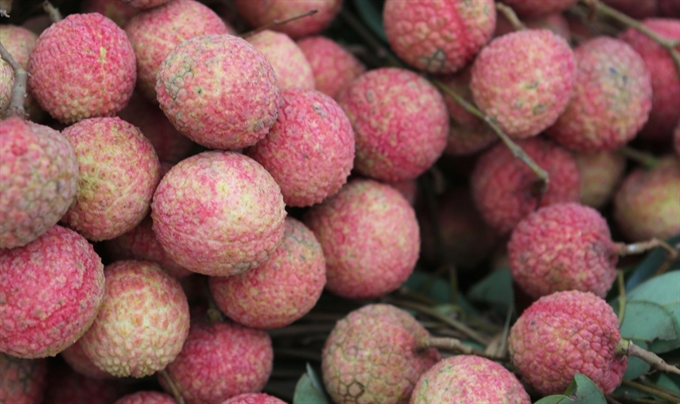 Economy
Economy

Việt Nam's enterprises are ready to promote lychee exports this year, the Ministry of Agriculture and Rural Development (MARD) said
 |
| Việt Nam’s enterprises are ready to promote lychee exports this year. This year, lychee output was expected to reach 130,000 tonnes in Bắc Giang Province and 50,000 tonnes in Hải Dương Province. — Photo Trương Vị |
HÀ NỘI – Việt Nam’s enterprises are ready to promote lychee exports this year, the Ministry of Agriculture and Rural Development (MARD) said.
This year, lychee output was expected to reach 130,000 tonnes in Bắc Giang Province and 50,000 tonnes in Hải Dương Province.
The lychee output in Bắc Giang was estimated to reduce by 10 per cent against 2015. But the output of high quality lychees under VietGap and GlobalGap, national and international quality standards for farming products, have been increased, Bắc Giang Province reported.
Hoàng Trung, head of MARD’s Plant Protection Department, said the department has granted 29 codes for 300ha for growing lychees, mostly located in Bắc Giang for exports to high demand markets.
Many enterprises have come to the lychee growing regions with codes to order lychees for exports, he said. They would focus on exporting to Australian markets while also paying attention to the United States, European Union and the Association of South East Asian Nations markets.
The Hà Nội Irradiation Centre is ready to implement irradiation services for fruit exports this year to reduce spending for lychee export activities. The department has complemented procedures to get recognition from Australia for certificates of the centre, he said.
Dương Văn Thái, deputy chairman of the People’s Committee of Bắc Giang Province, said the province expected to sell 78,000 tonnes of lychee on the domestic market and export 52,000 tonnes this year.
For export markets of Vietnamese lychees, last year, China was the largest export market with an export volume at 100,000 tonnes, accounting for 50 per cent to 60 per cent of total export volume.
This year, Trung said the department has asked phytosanitary agencies in Lào Cai and Lạng Sơn provinces to create favourable conditions for issuing export licences to lychees as soon as possible.
The deputy head of customs department of Lạng Sơn Province, Vy Công Tường said his department would create conditions for lychee exports, including transport, warehousing and administrative procedures.
At present, Việt Nam has negotiated with China to accord highest priority to export lychee to China and then other fruits, reported chinhphu.vn.
Meanwhile, the People’s Committees of Lào Cai, Bắc Giang, Hải Dương and Hưng Yên provinces which account for a large lychee-growing area in the country met in late May to promote the exports of Vietnamese fresh lychees to China via the Lào Cai border gate.
Authorities pledged to facilitate administrative procedures, ensure transport safety, and enhance market management to reduce frauds in the trade of the fruit, reported vietnamplus.vn.
Deputy Director of the Lào Cai Department of Industry and Trade Nguyễn Trường Giang said the provincial management board of economic zones has asked farmers to study the market to have a proper export policy in place.
The province also advised farmers and businesses to export via trade contracts to avoid the risk of economic losses.
It pledged to create the best conditions for firms to export fresh lychees through Lào Cai border gate, he added.
Yang Peng, deputy chief of the Hekou district in China’s southern Yunnan province, said that the Chinese side will make it easier for bilateral trade and easier customs procedures.
The district’s authorities asked Vietnamese firms to strictly follow the customs procedures of the two countries, he added.
More than 26,000 tonnes of fresh lychees worth US$11.6 billion were exported to China via Lào Cai international border gate in 2015.
In 2016, the volume of fresh lychees exported via the gate is expected to equal the previous year’s amount, or about 420 tonnes per day. – VNS